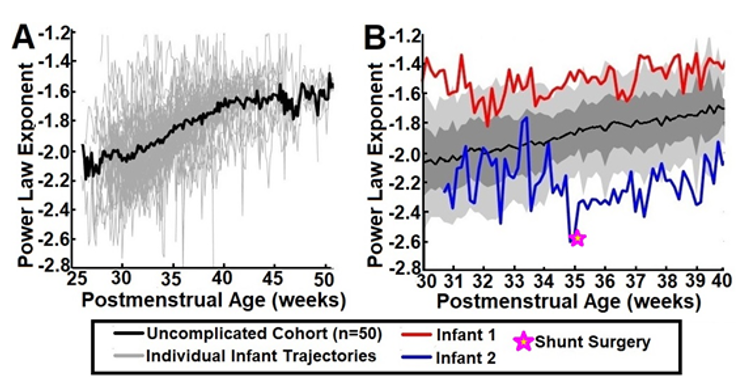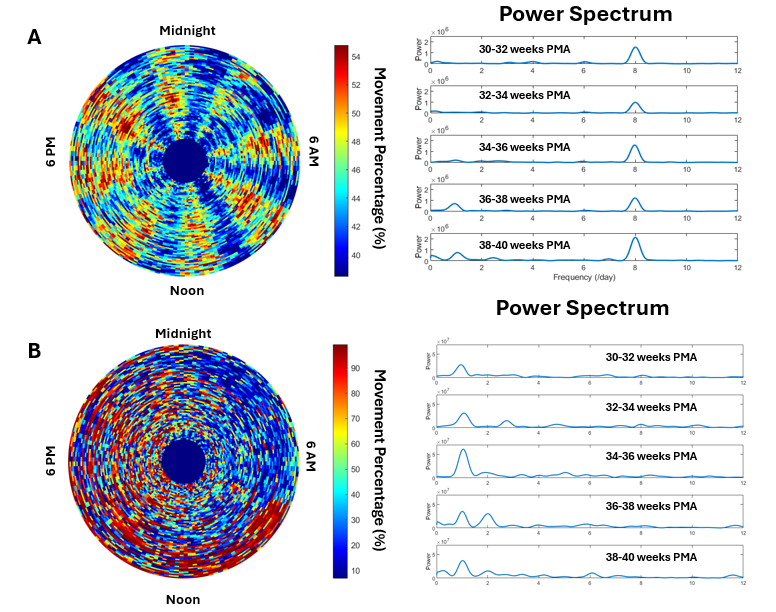Neonatal General 4: Novel Technology and Therapies
Session: Neonatal General 4: Novel Technology and Therapies
800 - Quantifying Maturation of Movement in Preterm Infants Using Continuous Photoplethysmography in the Neonatal Intensive Care Unit
Friday, April 25, 2025
5:30pm - 7:45pm HST
Publication Number: 800.6258
Ally Richardson, University of Texas at Austin Dell Medical School, Austin, TX, United States; Joshua Chang, University of Texas at Austin Dell Medical School, Austin, TX, United States; Kinga Jenei, University of Texas at Austin Dell Medical School, Austin, TX, United States; Alan Groves, University of Texas at Austin Dell Medical School, Austin, TX, United States; Leonora Blodgett, Northeastern University, Boston, MA, United States; Dagmar Sternad, Northeastern University, Boston, MA, United States; David Paydarfar, University of Texas at Austin Dell Medical School, Austin, TX, United States

Ally Richardson (she/her/hers)
PhD Candidate
University of Texas at Austin Dell Medical School
Austin, Texas, United States
Presenting Author(s)
Background: One in nine live births is born preterm ( < 37 weeks gestational age). As the infant reaches full-term, maturation of movement patterns is a critical marker of neurological health. Quantifying the maturation of movement patterns is critical for early detection of disorders of the nervous system. Currently, movement is not continuously monitored in the Neonatal Intensive Care Unit (NICU).
Objective: To longitudinally track movement continuously throughout the period of prematurity, up to three months in the NICU, our objective was to quantify the distribution of movement bout durations over time in uncomplicated preterm infants, and in those with neurological and other complications.
Design/Methods: We used a routinely collected signal, photoplethysmography (PPG), to identify movement bouts using a previously validated wavelet-based movement detection algorithm. A binary movement signal was extracted from PPG artifacts due to movement as an indicator of whether the infant is moving. Longitudinal trends in the movement bouts were quantified by plotting the weekly distributions of movement bout durations across post-menstrual age. Our study cohort consisted of 142 preterm infants born less than 31 weeks gestational age. This infant cohort was divided into “uncomplicated” (n=50) and “complicated” (n=92) sub-groups based on clinical criteria.
Results: Movement bout durations over 24 hours displays a long-tailed distribution that is described by a power law relation. For the uncomplicated preterm infants, the exponent of the power law displays a linear increase with postmenstrual age between 30 and 40 weeks. Infants with severe neurological complications show a deviation from this progression. In addition, actigraphy reveals both ultradian and circadian rhythmicity of the movement patterns within a 24-hour period. For the uncomplicated cohort, a 3-hour feeding cycle and a circadian rhythm emerges with age. In contrast, an infant that was tube-fed continuously did not exhibit this 3-hour movement cycle but did show a circadian rhythm of movement activity.
Conclusion(s): Routine longitudinal monitoring of movement bouts revealed normal and abnormal patterns of movement that could be of clinical significance. We propose further research in a larger cohort of infants to test whether aberrant movement patterns can indicate complications in preterm infants early in their NICU course. This could enable clinicians to diagnose and intervene sooner, with the potential to improve neurological outcomes in this high-risk population.
Comparison of Power Law Exponents
.png) Regression lines in log-log domain showing differences in slope for an infant at 30 weeks PMA (blue) and 37 weeks PMA (red).
Regression lines in log-log domain showing differences in slope for an infant at 30 weeks PMA (blue) and 37 weeks PMA (red).Power Law Exponent Trajectories
 Maturation plots showing the distribution of movement bout durations across postmenstrual age. A: Normative maturation trajectory for the uncomplicated preterm cohort (n=50). B: Maturational trajectories for two infants, one with multiple complications and pain management (red line) and a second one (green line) with bilateral IVH and hydrocephalus, requiring shunt insertion at 35 weeks (yellow star). Both are compared to the mean normative trajectory shown in black, with dark grey for 1 standard deviation, light grey 2 standard deviation.
Maturation plots showing the distribution of movement bout durations across postmenstrual age. A: Normative maturation trajectory for the uncomplicated preterm cohort (n=50). B: Maturational trajectories for two infants, one with multiple complications and pain management (red line) and a second one (green line) with bilateral IVH and hydrocephalus, requiring shunt insertion at 35 weeks (yellow star). Both are compared to the mean normative trajectory shown in black, with dark grey for 1 standard deviation, light grey 2 standard deviation.Movement Actigraph and Power Spectrum
 A: Movement activity actogram of the uncomplicated cohort (n=50) and the corresponding power spectrum for the uncomplicated cohort of preterm infants calculated in 2-week intervals. B: One individual who lacks the 3hr ultradian rhythm but shows a circadian 12-hour rhythm in their movement activity and the individual’s power spectrum.
A: Movement activity actogram of the uncomplicated cohort (n=50) and the corresponding power spectrum for the uncomplicated cohort of preterm infants calculated in 2-week intervals. B: One individual who lacks the 3hr ultradian rhythm but shows a circadian 12-hour rhythm in their movement activity and the individual’s power spectrum.
